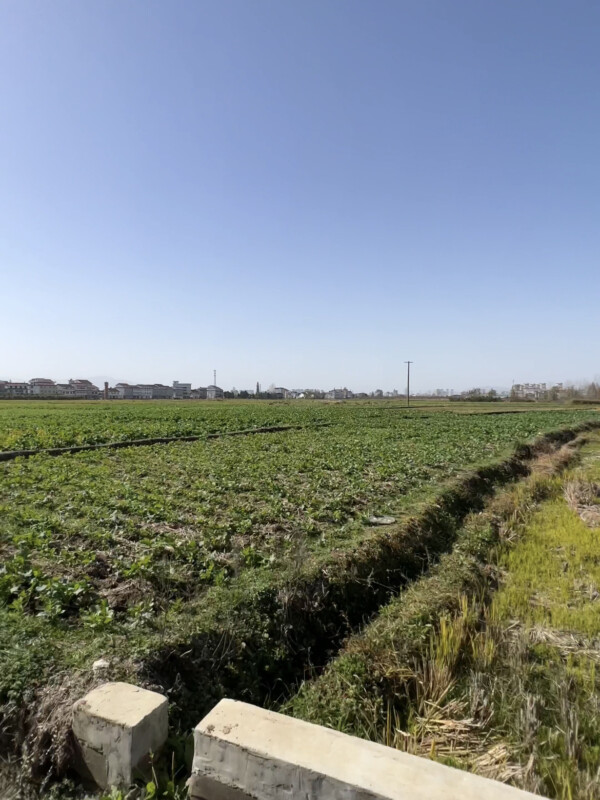My Guide to Xian Street Food
Dec 04, 2023
This post may contain affiliate links. Please see our disclosure policy.
This year, I had the chance to spend 4 days in Xian, China – my partner Shiping’s hometown. Xian is filled with delicious foods, rich culture, and is the home of the famous Chinese Terracotta Warriors.
There aren’t many other places where you can find fresh handmade noodles at almost any hour of the day, but on the streets of Xian, you can. Xian cuisine has become more popular in the US over the last decade thanks to Jason Wang and his fast casual restaurant Xian Famous Foods (which Shiping LOVES). I have only tried Xian food a few times – Shiping’s homemade recreations, and Xian Famous Foods, and was SO excited to try the real thing during this trip.
We spent 4 days around the Xian area, and tried a variety of homemade foods, street foods, restaurants, and banquet hall foods. This post will bring you along the ride and break down 7 popular Xian Street Foods I tried.
Liang Pi (cold noodles)
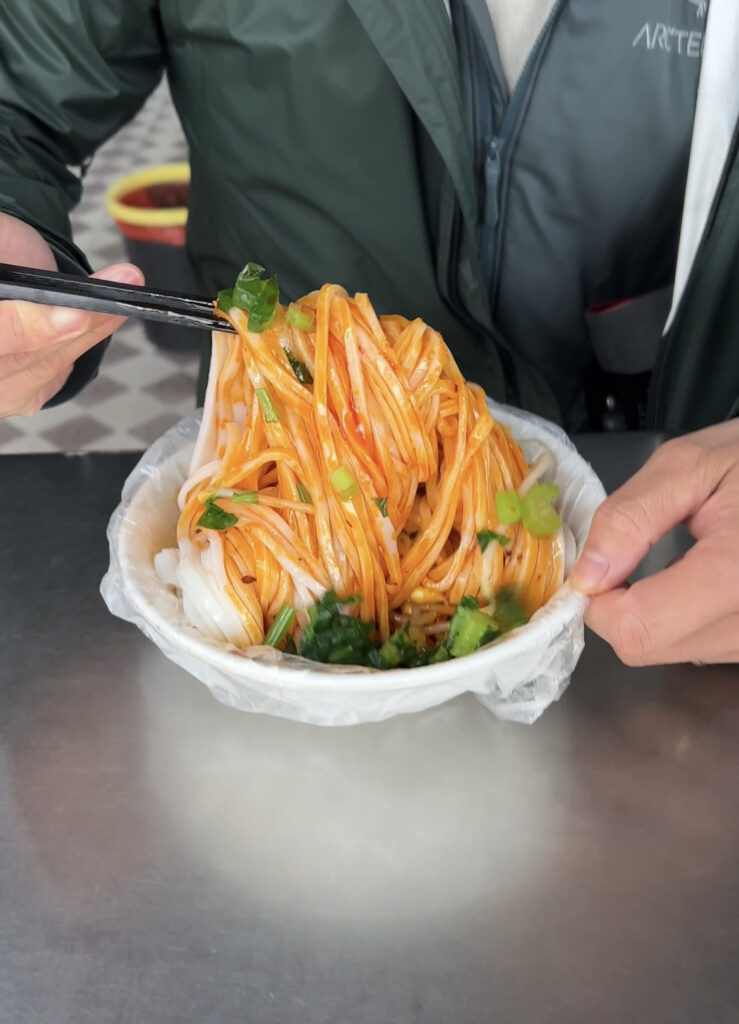
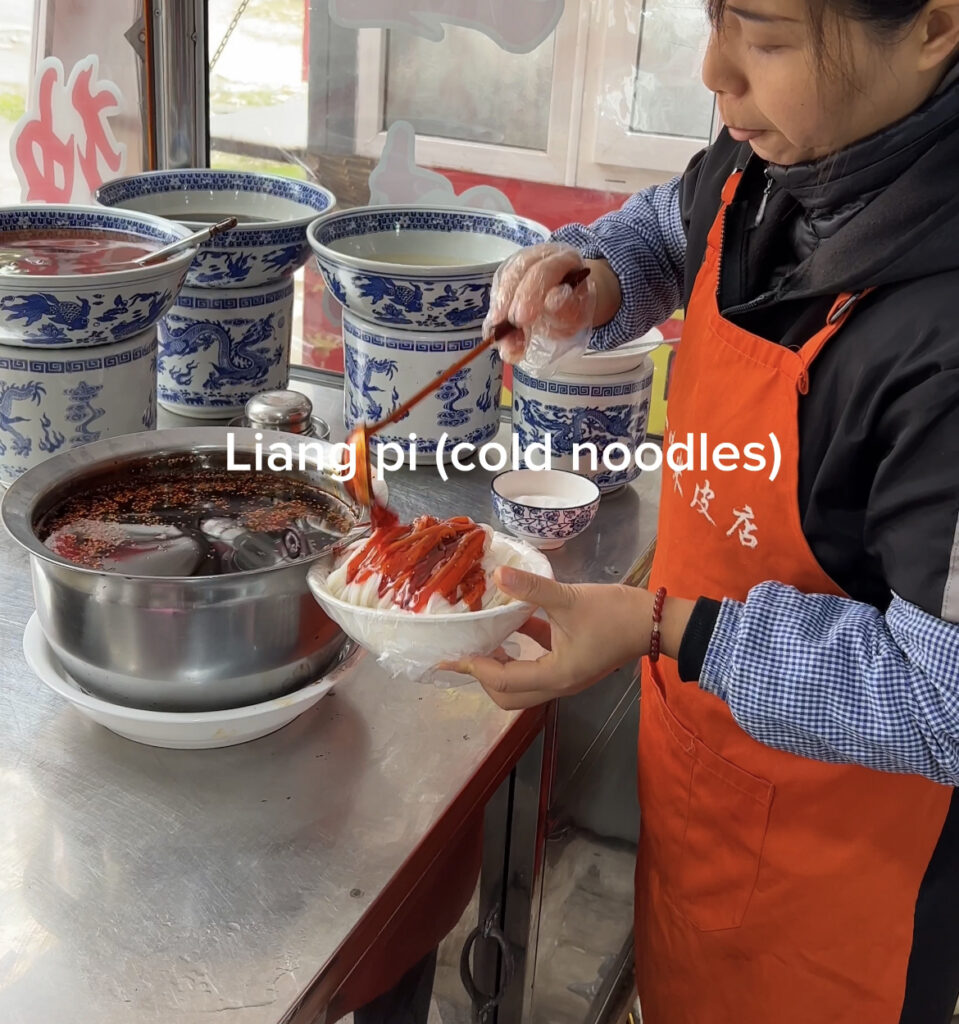
One of the most popular dishes in Xian, Liang Pi is a cold noodle dish that is chewy, slippery, and incredibly flavorful. The noodles themselves are made with just flour and water. When using wheat flour, the washing process yield 2 components – the starchy water, and gluten. After a laborious process of washing the dough, the starchy water is left to settle overnight. The starch is then steamed to make the noodles. The steamed noodles are then cut, tossed with an assortment of veggies, a garlic and vinegar sauce, and chili oil.
Now, let’s not forget about the gluten! The gluten is also steamed, cut into cubes, and tossed into the bowl. We had a hard time finding the traditional wheat noodle liang pi that comes with gluten. This is probably because this process is incredibly labor intensive, and people are more commonly making the rice noodle variant
There aren’t many places around the world you can find something of this texture and flavor. It’s truly a special creative interpretation with flour. I can totally understand why when you grow up eating this type of food, it becomes a nostalgic and favorite food.
Although this dish looks spicy, the red chili oil at the restaurants I tried was fragrant and NOT spicy. There’s a separate chili oil at the table you can add to to level up the heat.
If you want to learn more about Liang pi, check out this Eater article, as well as this YouTube short.
Biang Biang Mian (wide noodles)
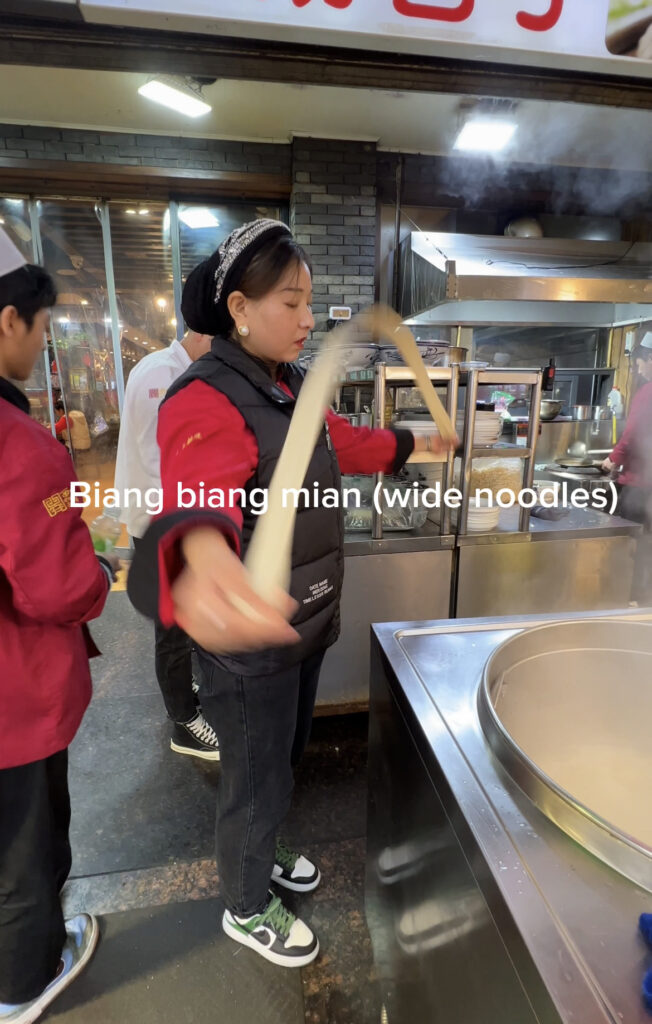
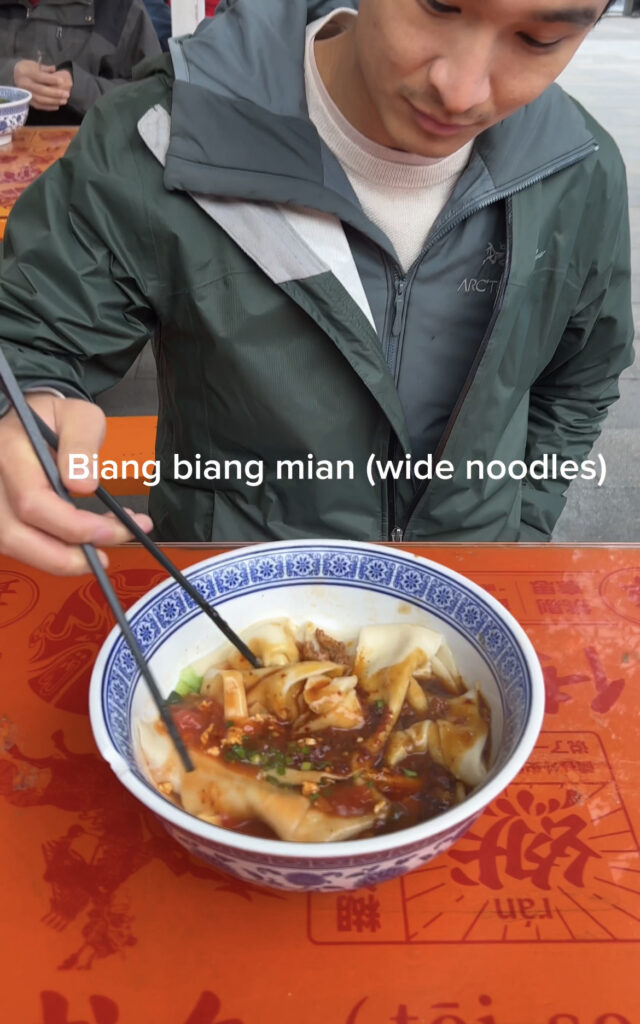
Biang biang mian are super wide, thick noodles that are eaten hot in a savory sauce. Believe it or not, biang biang noodles are made with only 4 ingredients – flour, water, salt, and oil. The noodles are made by pulling them as wide as your wingspan and smacking them on the counter, producing a “biang biang” sound. As we walked along the popular street food road in Xian, there was numerous stalls making this specialty noodle.
We ordered the combination flavor with tomato egg (ji dan xi hong shi), chili oil (you po la zi), and minced meat (sao zi). The combination of flavors was aromatic, slightly tangy, and very on point. I LOVED the texture and chew that come with these noodles. Out of all the different street foods, I’d have to say these were my favorite!
Pao Mo (bread soup)
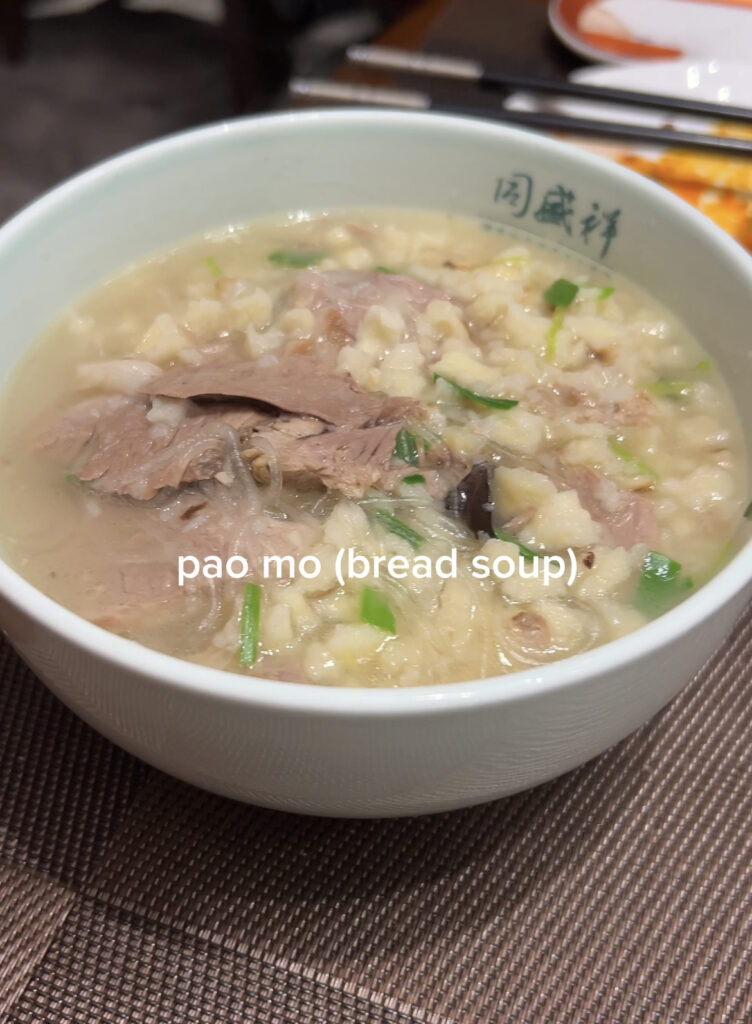
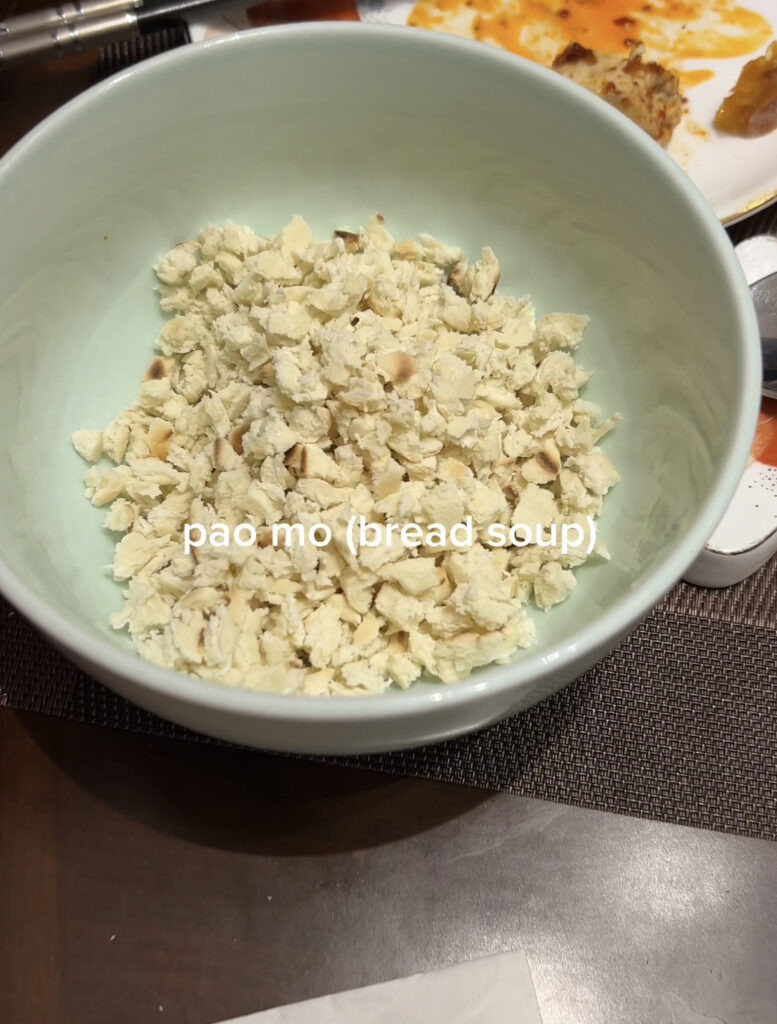
Pao Mo is THE DISH that Xian is known for. Shiping’s uncle was telling me stories about how Xian became famous for Pao Mo, and how it’s common for people in Xian to eat this ~ once a month.
Pao Mo is a bread soup with lamb, thin vermicelli noodles, and veggies. You can compare it to Italian Ribollita since both of these dishes were born from needing to use up stale bread.
In literal translation, mo is a Xian term for bread. Pao translates to soak, so pao mo literally translates to soaked bread.
What was fun about our pao mo experience is that we got to pick the stale bread ourselves. We each took a piece of stale bread and picked this into tiny pieces. The secret to Pao Mo is that the smaller you pick your bread pieces, the better it tastes. This is why we opted to pick the bread ourselves, and I can totally see why bigger pieces wouldn’t be as good!
Once you pick the bread, they take your bowls to the back and finish cooking the pao mo. You can customize your bowl with beef or lamb, and even add extra add ons as desired.
Eating an entire portion of Pao Mo can feel a little heavy near the end, so I’d recommend sharing a bowl so you can taste many different dishes along with the Pao Mo.
Rou Jia Mo (pork sandwich)
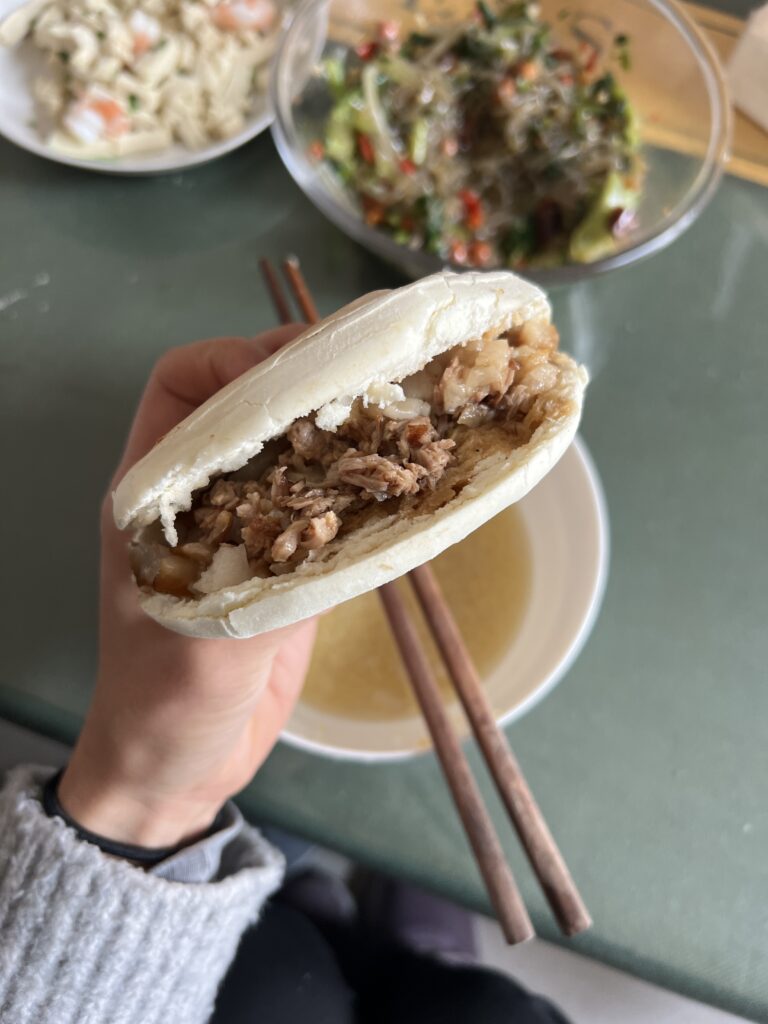
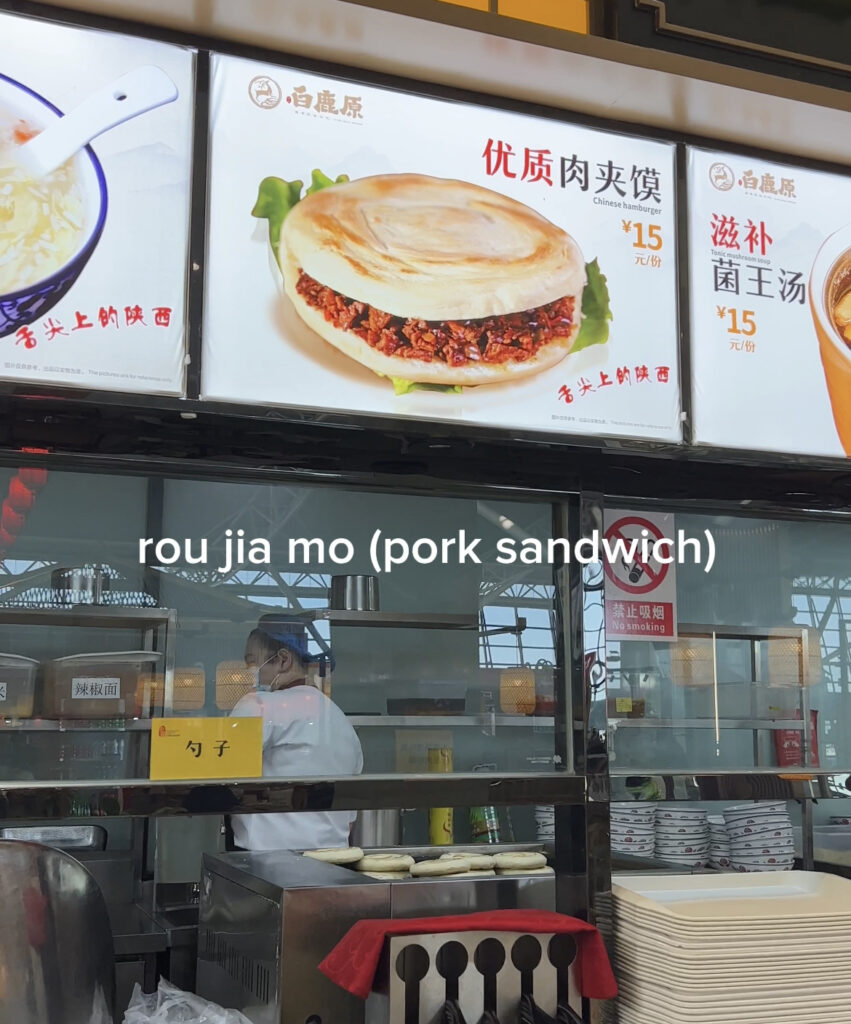
Commonly called a “chinese hamburger”, Rou Jia Mo is another popular Xian street food unique to the Shaanxi province.
The literal translation of this is meat plus bread. It’s typically stewed pork that is chopped up into small pieces and stuffed in between a round bun.
The bun is non-yeasted, and is less fluffy and soft compared to what we have in the US. However, the juicy and fatty pork softens the bread and makes for a tasty treat.
It’s common for someone to be eating a rou jia mo in one hand and slurping a bowl of liang pi with the other. The rich, savory nature of the rou jia mo pairs well with the vinegary, flavorful liang pi. I can 100% see why these 2 dishes are some of the most popular street foods in Xian!
Hot and Sour Lamb Dumplings
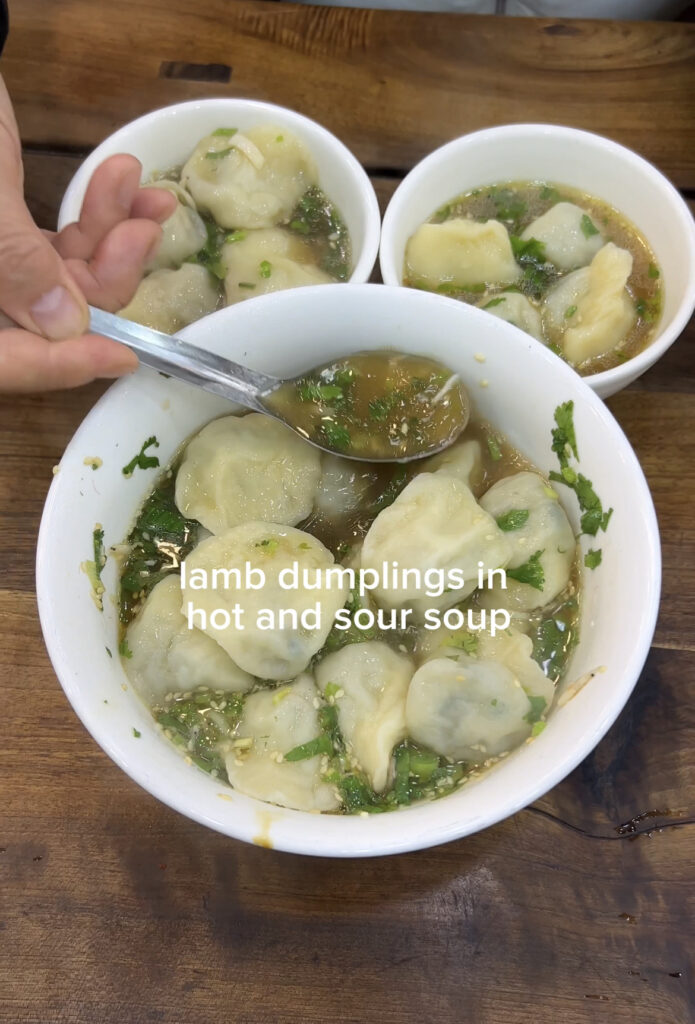
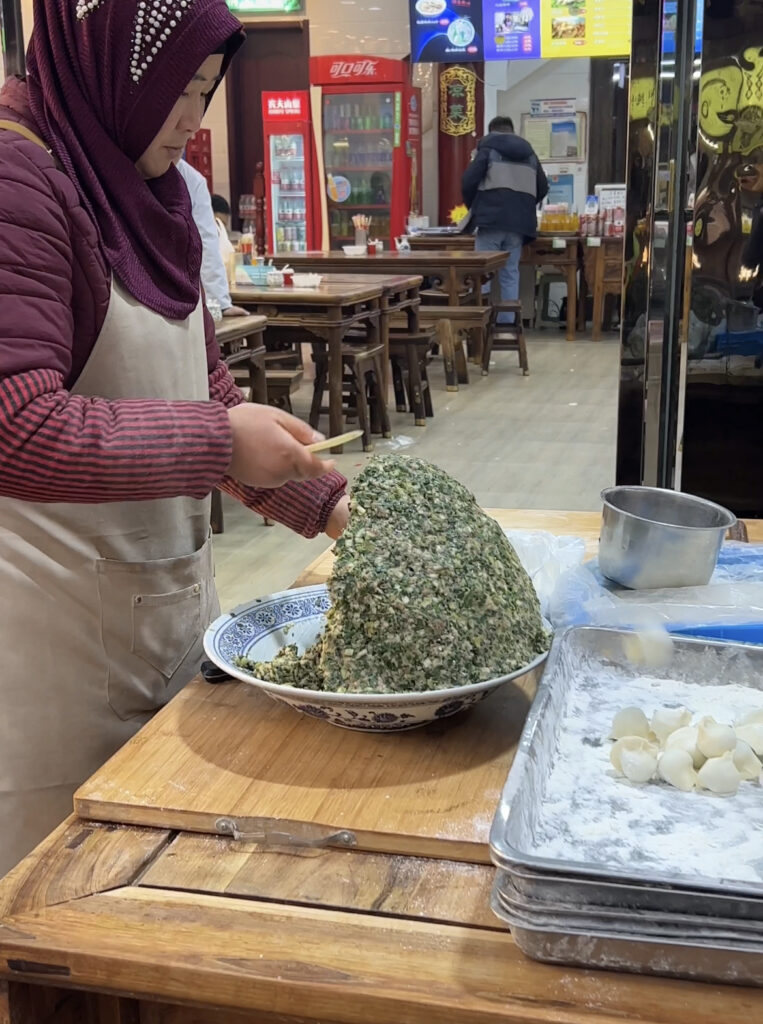
Becuase Xian is known for really great flour-based foods, I knew I needed to try their dumplings.
The dumpling wrappers in Xian are all made by hand, and have a super delicious chew to them. These are different than dumplings made in other parts of China, where the dumpling wrappers are machine made and much thinner.
This was also my first time having dumplings with a hot and sour soup base, which I LOVED. The tangy soup balanced out the savory lamb, and the fresh cilantro and scallions brightened the entire dish.
It was eye catching to pass the dumpling lady wrap from her massive mound of dumpling filling. If you get a chance, I highly recommend you try these!
Lamb Skewers
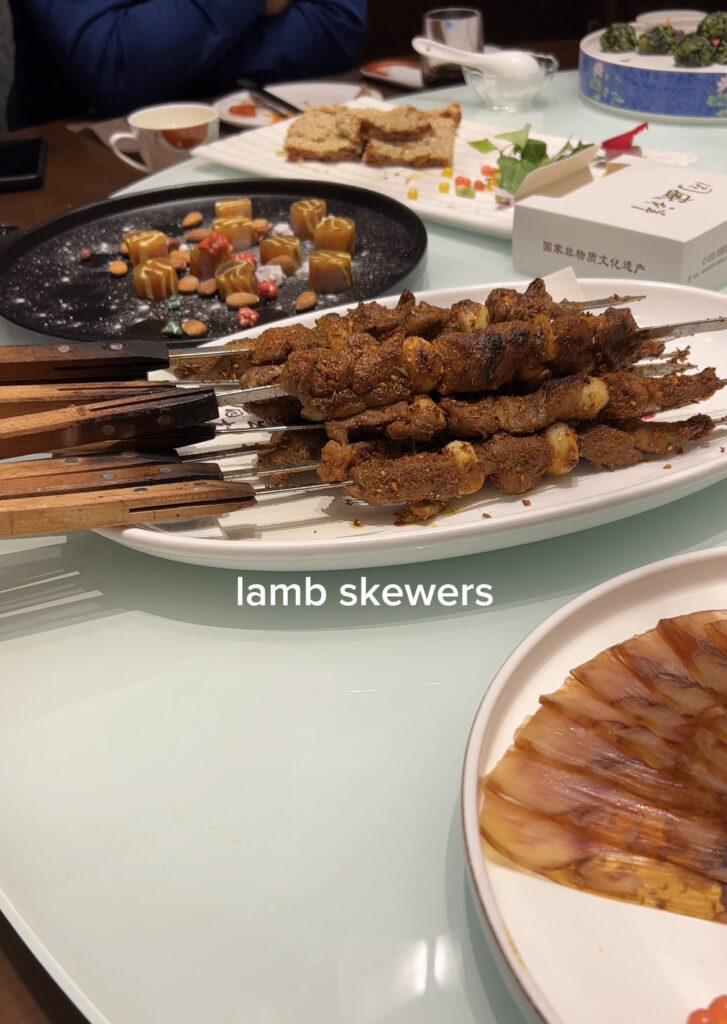
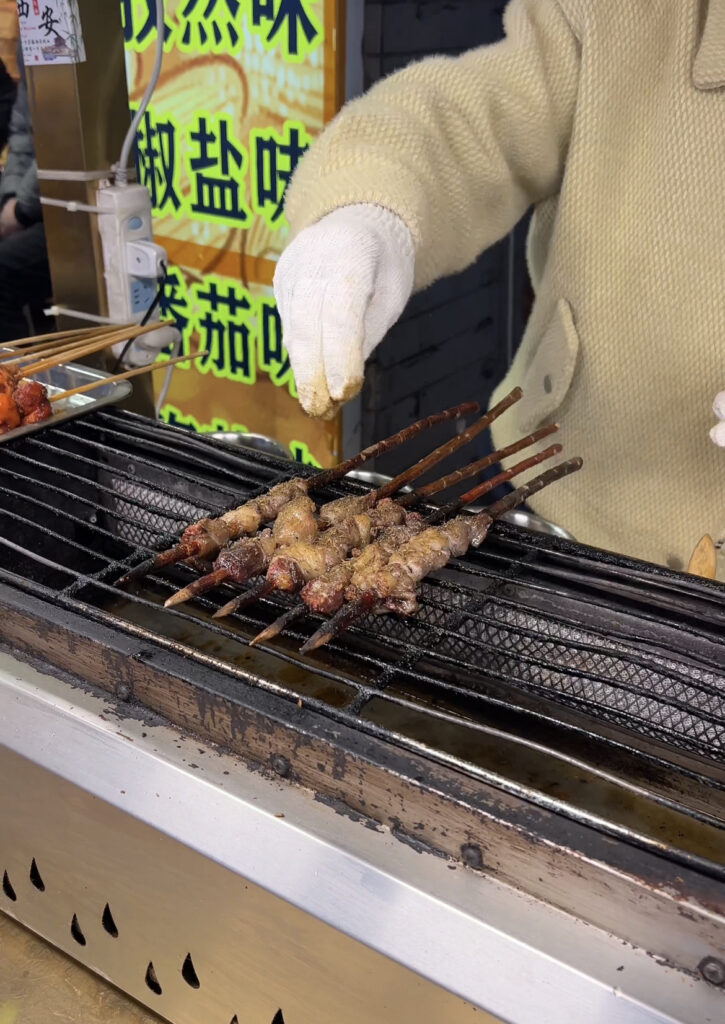
Another Xian street food specialty is lamb skewers. Grilled over a hot fire and dusted with a tingly, cumin seasoning blend, these lamb skewers are fun to eat, tasty, and a great pairing to any noodle dish.
You can find people of all sorts, particularly teenage boys, enjoying multiple lamb skewers along with their bowl of noodles or lamb dumplings.
Hong Tang Ci Ba (brown sugar mochi)
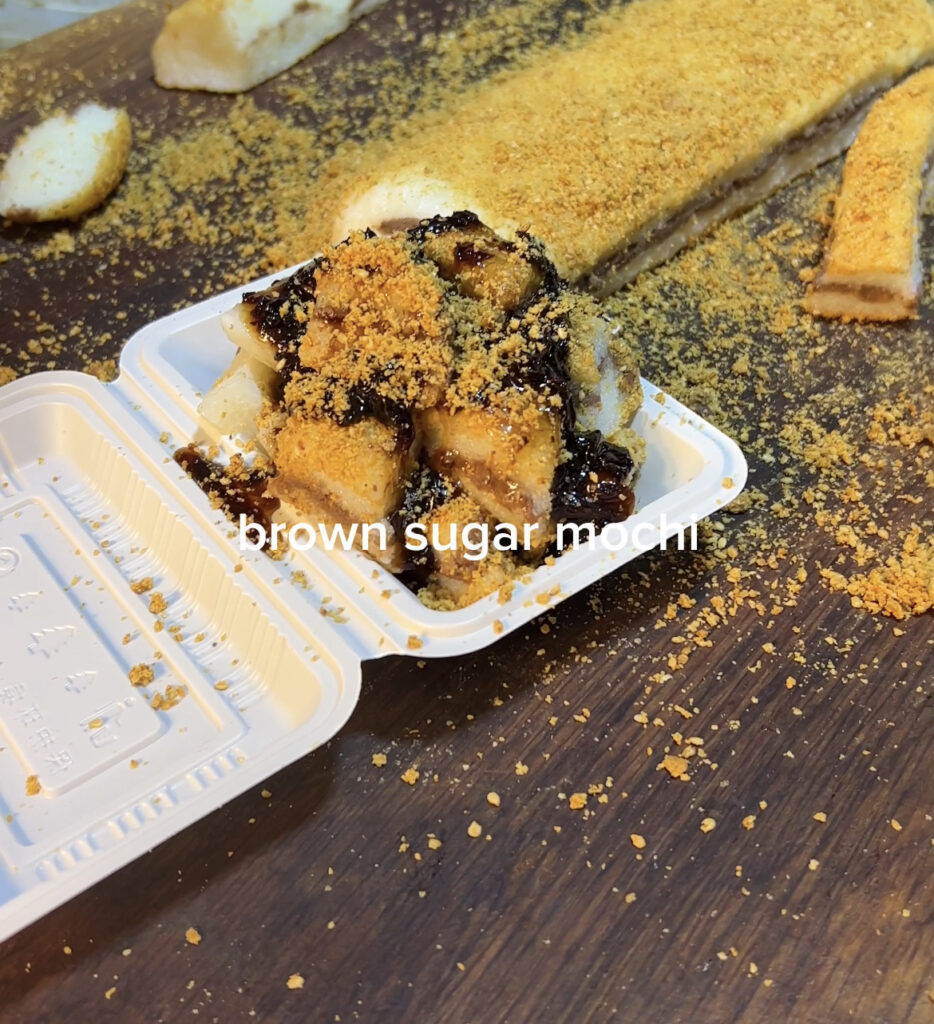
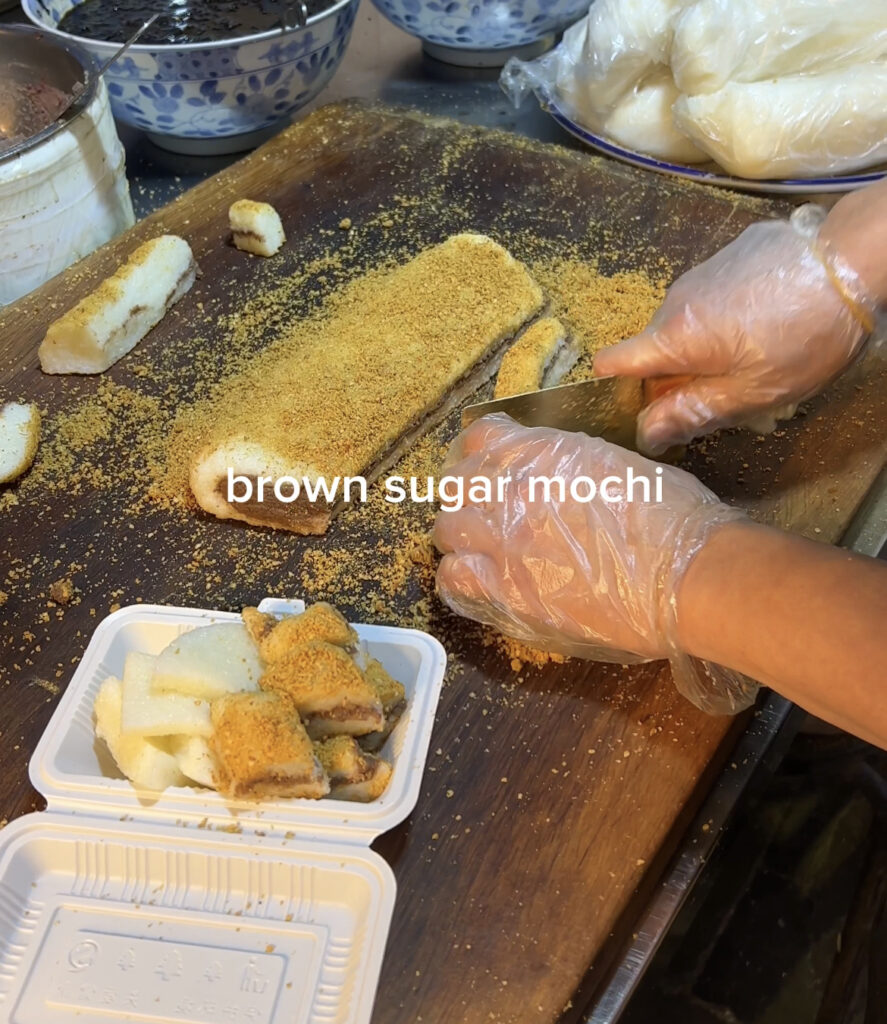
We can’t have a food tour without dessert, and these brown sugar mochi were chewy, sweet, and so delicious!
The mochi was hand pounded onsite, then filled with red bean paste and topped with sesame powder, rose jam, and honey. If you haven’t had fresh, hand pounded mochi, you HAVE to try this when you can. The texture, toppings, and flavors are such a delightful way to finish off a street food tour.
I hope you all were able to get a little taste of Xian street food with this post and feel inspired to try them if you can!
If you liked this post, check out my other Travel Food Diary posts:
My “Farmers Home” Dining Experience in Rural China – Nong Jia Le
